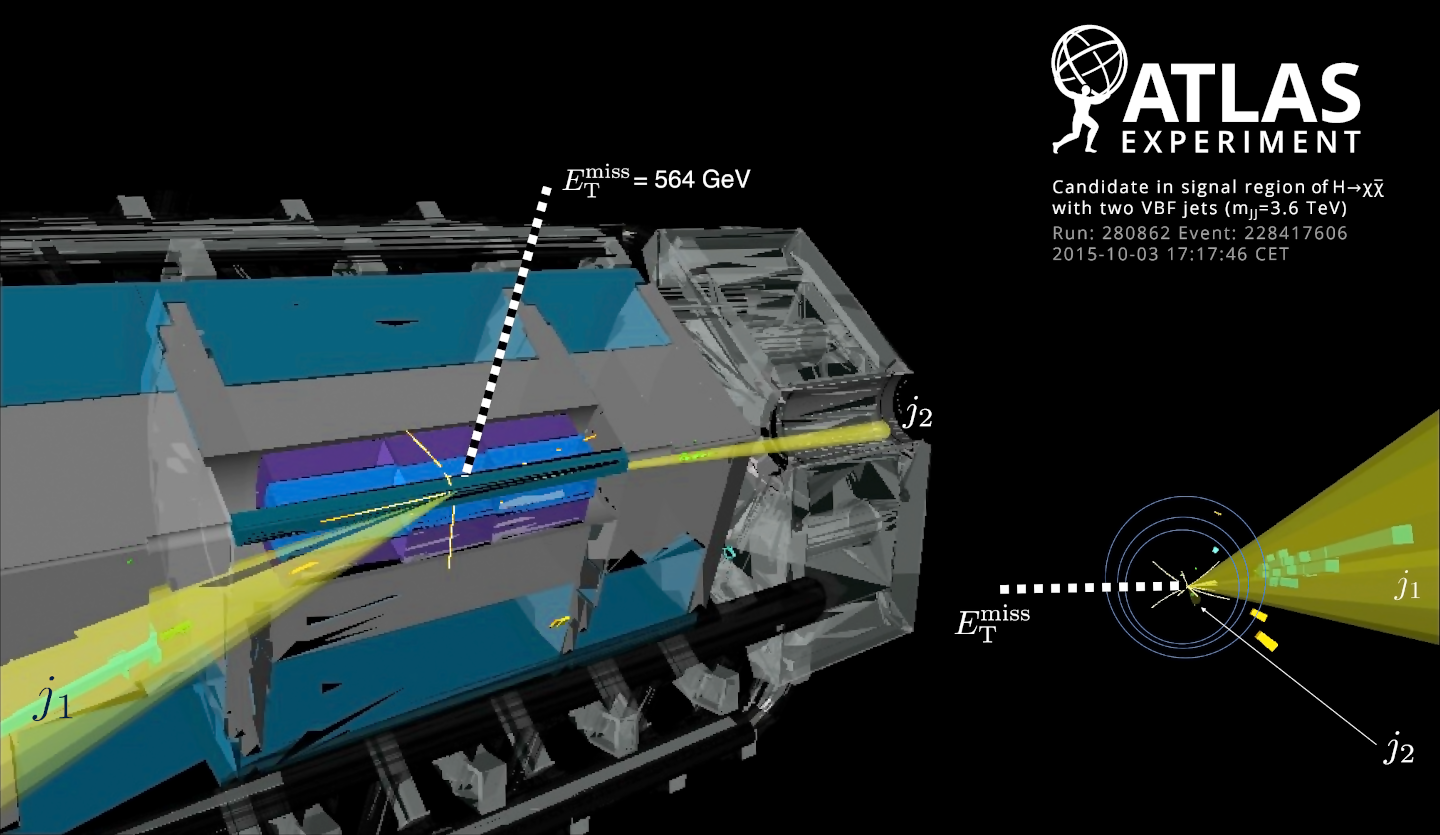Physicists from the ATLAS collaboration at CERN’s Large Hadron Collider searched for particles of dark matter by looking for transformation of the Higgs boson into particles that cannot be directly detected by the ATLAS experiment (“invisible particles”). Presence of such particles in the collision debris would create an energy imbalance with visible particles, which can be measured. The scientists sifted through the full dataset from Run 2 of the LHC (2015–2018), around ten million billion (1016) proton–proton collisions, seeking events in which a Higgs boson was produced via a specific, well-identifiable process (known as vector-boson fusion) and then transformed into undetected particles.
The data show no excess of such characteristic events over the expected background. ATLAS concluded at a 95% confidence level that no more than 13% of Higgs bosons produced in the LHC could transform into invisible particles. These findings place the strongest limits so far on Higgs transformations to such invisible particles.
Dark matter, which makes up around 85% of the mass of the universe, has only been observed indirectly, through gravitational effects. No particles of this substance have been observed in a laboratory. Further, even if they are produced in collisions at the LHC, physicists expect that dark-matter particles would escape interaction with the gigantic detectors located at the collision points (be “invisible” to the detector), resulting in “missing energy” in the collision debris.
However, dark matter has mass, and considering the Higgs boson’s relation to mass, physicists have suggested that dark-matter particles could interact with the Higgs boson: a Higgs boson could transform (or “decay”) into dark-matter particles shortly after being produced in the LHC’s collisions. Collision events in which a Higgs is produced through vector-boson fusion contain additional conical jets of particles directed towards the forward regions of ATLAS, close to the LHC beam pipe. The missing energy resulting from the individual particles would, on the other hand, be aligned towards the vertical plane perpendicular to the beam pipe. Combining these two characteristics gives scientists a unique signature in the quest for dark matter.
Although no excess was observed, the search provided important constraints on low-mass dark matter, which complement direct searches for dark matter performed at other facilities. It was also an important demonstration of the novel techniques that scientists are applying in research at the LHC. The Higgs boson, discovered in 2012, has quickly evolved into an invaluable means of searching for signs of physics beyond the Standard Model of particle physics.

